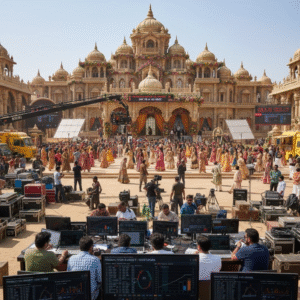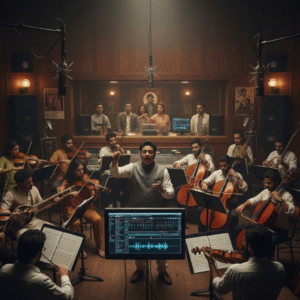A Formula That Once Worked—Now Feels Worn Out
Bombay – 2025
Once considered a surefire strategy to revive the Hindi box office, the trend of remaking successful South Indian films into Hindi is now yieldingdiminishing returns. What began as a creative bridge has increasingly become a tired formula, with remakes struggling to capture either the heart of the original or the attention of the audience.
In a landscape where original South Indian films are readily accessible via OTT—with subtitles and massive pan-India buzz—the remake no longer feels essential.
When the Trend Worked
The early 2010s saw massive success with Hindi remakes like:
- Wanted (2009) – Remake of Telugu film Pokiri
- Rowdy Rathore (2012) – Remake of Telugu hit Vikramarkudu
- Kabir Singh (2019) – Adaptation of Arjun Reddy
At the time, these films brought regional stories to an audience with limited access to South Indian cinema.
But the dynamic has changed.
Why Remakes Are Now Falling Flat
- Easy Access to Originals
Today’s audience doesn’t need a Hindi version—they’ve already watched the original on OTT.
Example: A large chunk of Hindi-speaking viewers watched Pushpa and Kantara with subtitles long before any talk of a remake began. - Cultural Disconnect
Nuanced regional storytelling often loses its essence when transposed.
Case in point: Shehzada (remake of Ala Vaikunthapurramuloo) underperformed despite a high-profile cast, as the soul of the Telugu original was lost in translation. - Redundancy in Content
Audiences demand fresh narratives. Rewatching the same plotline with minor tweaks is no longer appealing, especially when dubbed versions are doing equally well. - OTT Awareness
With platforms like Aha, Sun NXT, and Netflix distributing South Indian content in multiple languages, audience exposure is no longer restricted by geography or language.
Industry Experts Weigh In
According to a 2024 Ormax Media study, over62% of Hindi viewers aged 18-35are comfortable watching non-Hindi content with subtitles. This represents a dramatic cultural shift—one where language is no longer a barrier to cinematic experience.
Filmmakers like Anurag Kashyap and Neeraj Ghaywan have repeatedly emphasized the need to“adapt themes, not just scripts.”A cultural transplant without reinterpretation only alienates the viewer.
The Way Forward
Instead of direct remakes, producers might find success in:
- Inspired adaptations that localize the story meaningfully.
- Bilingual productions with simultaneous releases.
- Collaborative ventures between South and Hindi filmmakers.
Examples likeDrishyam 2show that when a remake is handled with sensitivity and creative reinvention, it can still resonate.
A New Reality for Hindi Cinema
Hindi remakes of South Indian hits are no longer guaranteed blockbusters.
The audience has grown—in taste, access, and awareness.
In an era where the original is a click away, simply changing the language is no longer enough.
Bollywood must now rethink—not recycle.











